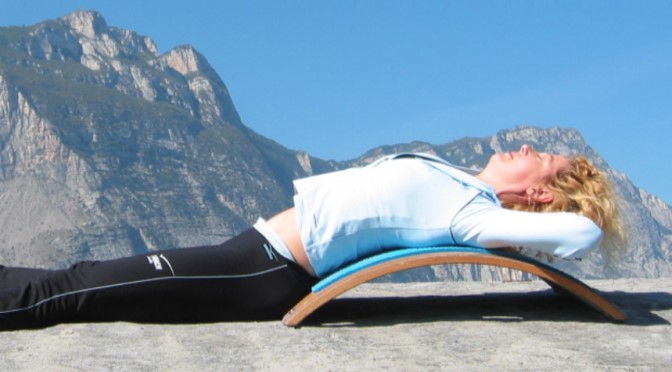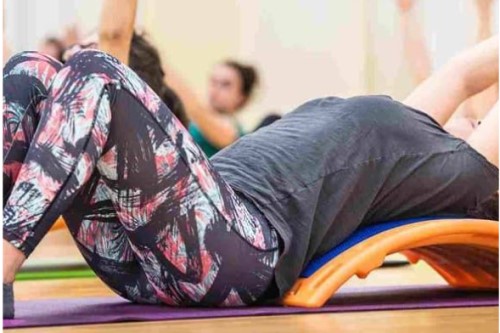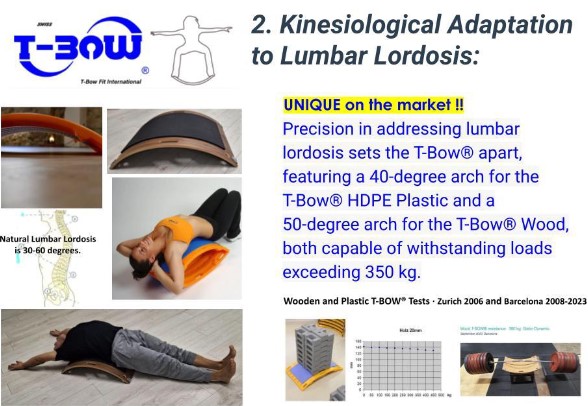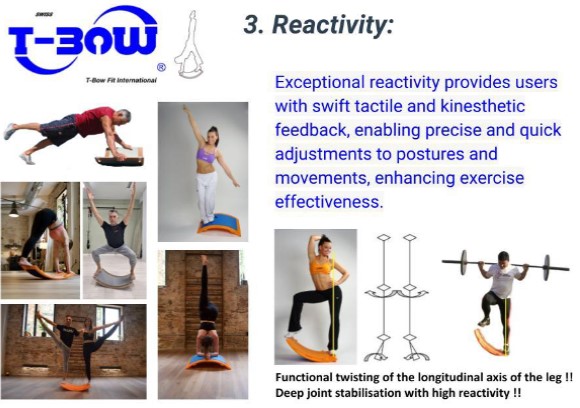Three crucial elements for proper backward lying technique are:
1. Ensure all vertebrae make contact with the bow.
2. Maintain a straight line between the neck and head.
3. Ensure the bottom touches the floor.
Inflexibility in the spine can hinder the ability to touch each vertebra to the bow. If the inflexibility is in the upper back, individuals may need to support their head constantly or, preferably, use an additional bow or similar support behind them.

To enhance flexibility in the upper back, a beneficial exercise involves starting by lying with the head on the floor, lifting the bottom high, and then gradually lowering it to the hips, only as far as the neck remains comfortable.
For those who struggle to touch the bow in the lower back, bending the knees while sitting on the floor and leaning towards the bow is necessary. While holding the head, gradually lower the upper body and press each vertebra against the bow one by one.

Summary Back Stretching on the T-Bow®
1. A healthy back is a comprehensive pursuit that encompasses, among others: meticulous balance and
coordination, well-balanced strength in the pelvic-back complex, finely tuned mobility of the spine within its inherent
curvatures, heightened awareness of one’s bodily parts, and a positive emotional state.
2. The T-BOW® is uniquely designed to replicate the natural curvature of the lumbar spine, offering corrective benefits for
those with excessive or insufficient lordosis. It provides therapeutic advantages by helping correct spinal alignment
through lying on it, making it suitable for a wide range of individuals.
3. The T-BOW®’s high reactivity and anatomical support enhance kinesiological fixation of the back, preventing stable
vertebrae from sinking and allowing for precise postural adjustments. Combining back extensions and rotations on
the T-BOW® is vital for maintaining spine mobility.

